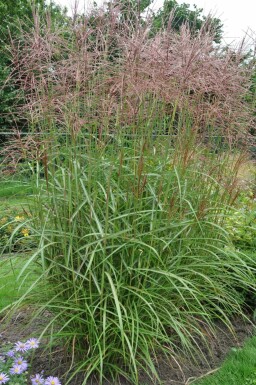
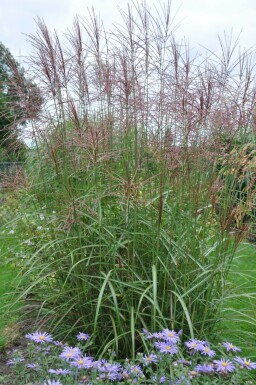



Updated on 10 September 2025
We regret to inform you that we are currently unable to ship orders to the United Kingdom. We anticipate being able to resume shipments at the beginning of 2026.
Miscanthus adds elegance to any garden with its striking plumes and strong autumn colour. Ideal for modern gardens, it thrives with minimal care, enhancing biodiversity while providing winter interest. Use it in borders or as a stunning standalone feature.





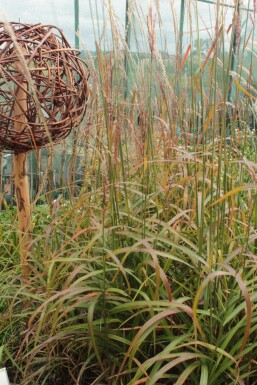
180cm



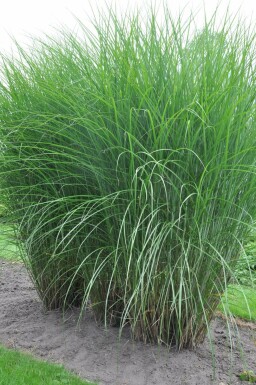
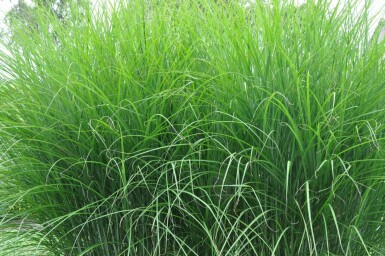




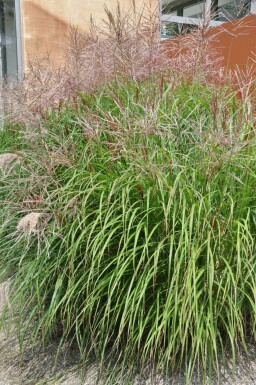
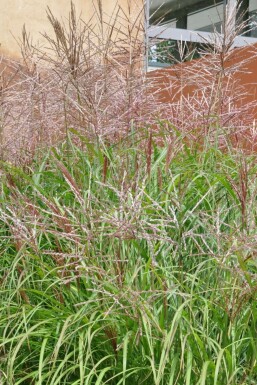
150cm






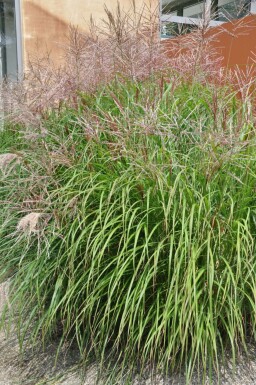
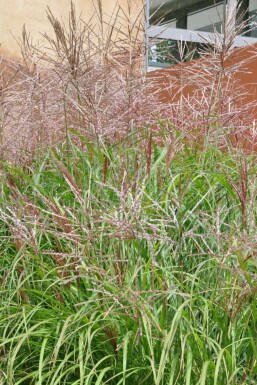
150cm






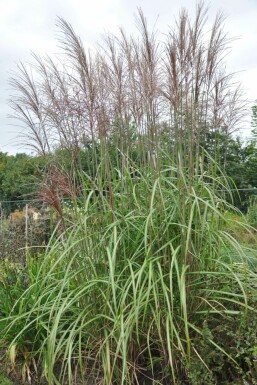





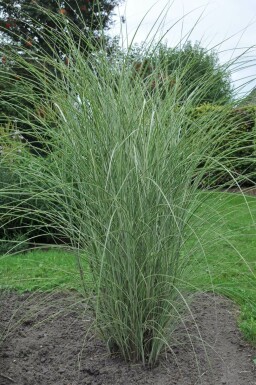
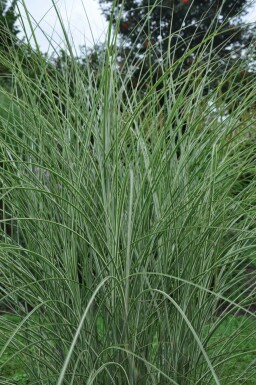



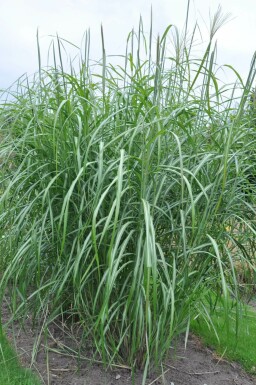
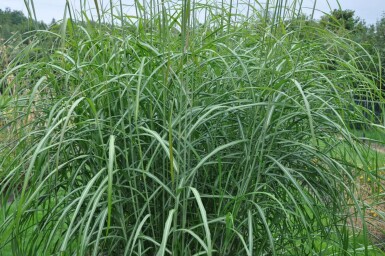
180cm



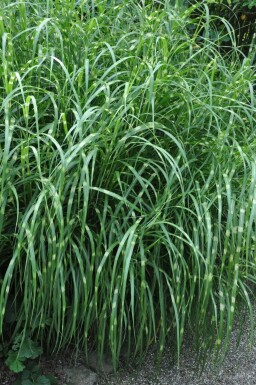
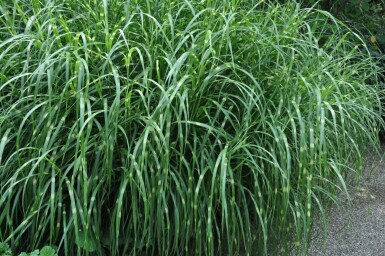
200cm



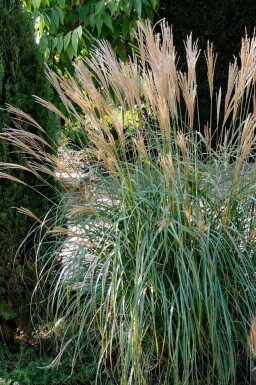
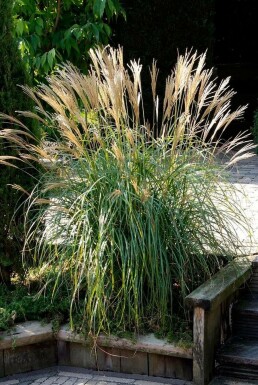



Miscanthus is a tall ornamental grass that brings movement and height to gardens. Known for its clump-forming growth and arching blue-green to silver-green leaves, it adds a special dynamic to any space. The sharp leaf edges and high silver-red plumes provide texture and colour, transforming to straw-yellow in autumn. From August to October, the fluffy seeds create a stunning display. Whether used in a modern garden or as a winter structure, Miscanthus stands out. Consider adding this large specimen grass to a prairie garden for its drought-resistant qualities. Discover why many choose maiden grass to enhance garden privacy and structure. For those looking to buy Miscanthus UK, it offers elegance and practicality throughout the seasons.
Miscanthus, also known as maiden grass, is a tall ornamental grass that adds structure and elegance to gardens. This perennial plant is part of the Poaceae family. It is well-loved for its drought tolerance and winter interest, creating striking silhouettes in colder months. Synonyms for Miscanthus include Eulalia grass and architectural grass, highlighting its versatility in garden design. Maiden grass is often used in borders, group plantings, and as a specimen plant. It can also serve as a windbreak or a feature in natural or low-maintenance gardens. Originating from East Asia, specifically China, Japan, and Korea, Miscanthus is adaptable to various climates and can thrive in UK gardens. In nature, Miscanthus offers seeds for birds and acts as a structural and buffer plant in grasslands and urban edges. The name derives from the Latinized version of the Japanese word 'miscan', symbolising grace and rhythm in Eastern garden traditions. Miscanthus has a hardy growth cycle, emerging late in spring and providing a striking winter structure. It should be pruned in early spring. For those looking to enhance garden structure, consider this remarkable plant. Buy Miscanthus in the UK to benefit from its unique qualities.
Miscanthus is a tall ornamental grass known for its graceful, fountain-like shape. It grows upright and forms clumps with arching blue-green to silver-green leaves. The sharp leaf edges add texture, while the high, silver-red plumes that emerge from August to October provide a striking visual. These plumes can turn a straw-yellow as they mature, offering interest even in winter. Miscanthus is hardy and can withstand drought, making it a low-maintenance choice for gardens. The Miscanthus is a tall ornamental grass that sways beautifully in the wind. Its late spring emergence is followed by a significant growth period, with plants reaching heights between 1 and 3 metres, depending on the variety and growing conditions. This growth is influenced by factors like soil type, climate, and care. The flowering months of Miscanthus are influenced by climate and care, with blooms appearing from August to October. Suitable conditions include plenty of sunlight and well-drained soil. The flowers' colours vary from silver to purple, copper, and reddish, depending on the cultivar and environmental factors. Although not typically known for its fragrance, Miscanthus contributes to biodiversity by attracting wildlife. It is often used in borders, group plantings, and as a windbreak or specimen plant. Miscanthus offers year-round appeal, with winter interest thanks to its structure and the dried inflorescences that remain upright.
Miscanthus, a popular choice for ornamental gardens, features long, narrow leaves that resemble grass. The foliage displays a variety of colours, including green, silver, red, and sometimes variegated patterns. These plants maintain their structure through winter, offering a striking presence even in the colder months. Grow Miscanthus sinensis UK gardens for its resilience and beauty.
In terms of winter hardiness, Miscanthus can withstand temperatures as low as -29°C, making it suitable for USDA zones 5 to 6. This hardy grass remains robust even in chilly conditions, though wind exposure and soil conditions play crucial roles in its survival. Planting in sheltered areas with good drainage enhances its ability to withstand harsh climates.
Miscanthus is generally green throughout the year, retaining its leaves in many climates. However, in colder regions or specific varieties, leaves may turn brown and fall during winter. Placement in the garden and local climate significantly influence its evergreen nature. For those seeking year-round greenery, selecting the best varieties for screening can ensure constant cover.
Originating from Asia, Miscanthus is highly drought-tolerant due to its deep root system. The leaf structure, sometimes with a subtle waxy coating, aids in moisture retention during hot, dry spells. Adequate soil moisture and protection from strong winds further support its heat resistance.
Non-toxic and safe for gardens with children and pets, Miscanthus is ideal for borders and edges. This ornamental grass is not hazardous, ensuring a worry-free addition to any garden. Its upright growth and plumes not only add visual appeal but also offer ecological benefits. The plant contributes to biodiversity by providing shelter and food for various garden creatures. Its presence helps mimic natural habitats, thus enhancing the garden's ecosystem and resilience against pests.
Miscanthus is a versatile tall ornamental grass that enhances the garden with its elegance and various applications. It fits perfectly in modern gardens and adds a touch of magnificence with its feathery plumes. Here are some creative ways to incorporate Miscanthus in your garden design:
Miscanthus is a versatile plant that can enhance any garden with its elegant presence. It works well in ornamental grass borders and modern gardens. Combining Miscanthus with other plants creates stunning visual effects. For instance, Echinacea and Rudbeckia add vibrant colours and contrast against the texture of Miscanthus. Sedum and Panicum are excellent for a prairie garden look, providing an attractive autumn and winter structure. Verbena bonariensis can be paired with Miscanthus for a touch of delicacy and height variation. These plant combinations not only complement Miscanthus but also add seasonal interest. Echinacea and Rudbeckia bloom in summer, offering a colourful display. Sedum’s fleshy leaves and Panicum's airy plumes work harmoniously with Miscanthus's tall structure. Verbena bonariensis adds a whimsical touch. Miscanthus adds movement and height as a stately tall ornamental grass. Pairing these plants with Miscanthus creates a balanced yet dynamic garden that thrives throughout the seasons.
Miscanthus thrives in full sun and requires at least 6 hours of sunlight daily. This ornamental grass prefers a sunny location with well-drained, moderately moist soil. Exposure to sufficient sun ensures healthy growth and vibrant colour. Wind sensitivity is not a major issue for Miscanthus due to its deep root system, which provides stability. In windy areas, planting near a fence or adding a windbreak can help if needed. The ideal soil for Miscanthus is low-lime to neutral sandy or loamy soil. Proper soil drainage and regular fertilisation are key to promoting growth. Moisture is essential, but the soil must not be waterlogged. Factors like wind and sun exposure influence moisture levels. It's drought-tolerant, maintaining its structure during dry periods. The pH preference of Miscanthus ranges from slightly acidic to neutral. It's important to test soil pH and adjust as necessary to ensure optimal conditions. Adding organic matter can help maintain the desired pH and improve soil structure. With these conditions met, Miscanthus, also known as maiden grass, becomes an eye-catching architectural grass in the garden.
Miscanthus is best planted in spring, around April to May, once the soil has warmed. Plants delivered in pots can be planted year-round, barring frost. However, those with root balls or bare roots should ideally be planted in spring or autumn. Plant spacing depends on the plant's type, initial size, growth rate, and the number per metre. For accurate spacing details, refer to the plant properties listed on the Heijnen product page. Proper ground preparation is essential for Miscanthus. Use well-draining, humus-rich, and slightly moist soil. Adding compost during planting is advised. Full sun is required, with at least six hours of sunlight daily. While planting, ensure the soil is not cold or wet. After planting, water the Miscanthus sufficiently and consider using Heijnen planting soil for optimal growth. Regular watering and occasional fertilisation will help maintain its vibrant appearance. Miscanthus is drought-tolerant and retains its structure in winter, making it a low-maintenance choice for gardens. This tall ornamental grass provides both structure and movement in the landscape, with its majestic plumes adding interest throughout the year.
Miscanthus is a perennial ornamental grass that enhances any garden with its striking presence. It requires specific care to thrive and maintain its beauty throughout the seasons. Here are some key maintenance tips to keep your Miscanthus healthy and vibrant.
Miscanthus blooms from August to October, adding a soft texture to the garden landscape. Often used in borders, group planting, or as a specimen plant, it serves as a buffer plant in grasslands, providing seeds for birds and structural beauty. Consider adding Miscanthus to your garden displays to enjoy its architectural grass qualities and low-maintenance nature. Buy maiden grass to enhance your garden's appeal.
Miscanthus is a strong ornamental grass among the prairie plants. Known for its tall and graceful appearance, Miscanthus is a perennial grass that shines in modern gardens. The colourful plumes of Miscanthus can be silver, purple, copper, or reddish, depending on the variety. Its leaves, which range from green to variegated, add visual interest throughout the season. This plant is particularly valued for its autumn appeal, showcasing striking autumn colours and maintaining an architectural presence in the garden. As a tall ornamental grass, it serves as a wonderful backdrop or specimen in garden landscapes. It also provides shelter for various insects, contributing to biodiversity. In winter, the structure of Miscanthus remains visually appealing, offering texture and movement, especially when swaying gently in the wind. Maiden grass is not only drought-tolerant but also requires low maintenance, making it ideal for both experienced gardeners and beginners. By incorporating Miscanthus into a garden, one can enjoy a blend of beauty and function, highlighting its role as an essential element in creating captivating outdoor spaces.
Miscanthus is a popular choice for gardens. This tall ornamental grass offers several benefits that make it a favourite among gardeners.
Advantages:
Disadvantages:
Proper soil preparation, location, and regular care help reduce the risk of diseases and pests. Ensuring Miscanthus (maiden grass) is well-cared for will encourage optimal growth and blooming.
Miscanthus is a valuable addition to any garden. This ornamental grass is perfect for creating structure and privacy. It thrives in modern and prairie gardens and adds interest in winter. With its drought tolerance, it requires little maintenance. The plant blooms from August to October, providing a stunning display. Suitable as a specimen or planted in groups, Miscanthus offers versatility and enhances biodiversity. Maiden grass is known for forming attractive clumps, making it ideal for borders. Clump size can vary, providing options for different garden designs. Buy Miscanthus in the UK for a garden feature that remains attractive throughout the year. Order your Miscanthus (Maiden Grass) from Heijnen and add elegant height and a dynamic autumn display to your garden.
We would like to provide some tips on how to plant and care for a Miscanthus. By following these tips, you can be sure to enjoy your Miscanthus for a long time.
Miscanthus thrives best in sunny spots with well-drained, moderately moist soil. This ornamental grass prefers sandy or loamy ground with low-lime to neutral pH levels. A location that receives at least six hours of sunlight daily is ideal. The deep root system of Miscanthus makes it drought-tolerant, maintaining its structure even in winter. Planting in spring, once the soil has warmed up, ensures optimal growth. The right site contributes to healthier plants, richer blooms, and vibrant foliage. Miscanthus grows well in borders, group plantings, and as a specimen or windbreak. It's also suitable for modern and prairie gardens due to its ability to resist drought. For best results, prune annually in March.
Before planting Miscanthus, proper soil preparation is essential. This involves turning the soil and adding organic materials like compost to improve drainage and nutrient content. Well-prepared soil ensures better growth and allows water to reach the roots. Miscanthus, a beautiful ornamental grass, thrives in sunny spots with well-drained soil. Pot-grown plants can be planted throughout the year, except during frost periods. It's crucial to water the plants after planting until they are well-established. The size of the Miscanthus determines the number of plants needed per square metre. Spring or autumn is ideal for planting, especially when dealing with plants wrapped in burlap. Always leave the burlap intact when planting. Properly preparing the ground ensures successful growth and a stunning display in the garden.
Fertilising Miscanthus, also known as maiden grass, is crucial for its growth and vitality. Providing nutrients helps the plant develop strong roots and lush foliage, leading to healthier blooms. Using organic or organic-mineral fertilisers from Heijnen ensures a good growth and rich bloom. It is advised to fertilise Miscanthus twice a year: once in spring and again in summer. The amount of fertiliser required depends on the plant's size. Generally, a small handful for smaller plants, and more for larger ones. Make sure the fertiliser reaches the soil with the help of rain or by watering the garden during dry spells. This allows nutrients to absorb effectively, promoting healthy growth and vibrancy.
Miscanthus benefits from regular pruning to maintain its health and appearance in the garden. Pruning helps to promote new growth and keep the plant tidy. Cut back Miscanthus to about 10 cm in late winter or early spring, before new growth begins. This ensures that the plant can focus on producing fresh, vibrant stems. Pruning frequency is generally once a year, though dividing clumps every 4–5 years can also rejuvenate growth. Use sharp secateurs as the primary tool for pruning. Good quality tools ensure clean cuts, preventing damage and promoting healthy regrowth. For best results, prune in early spring to remove old stems, allowing the plant to display its full beauty in the warmer months. Proper pruning of Miscanthus not only enhances its appearance but also supports its structural integrity.
Miscanthus, including varieties like Miscanthus sinensis and Eulalia grass, generally have low to moderate water needs. It's important to provide adequate water during planting to ensure proper root development. Once established, these plants only need additional watering during extended dry periods. It's better to water thoroughly rather than giving a small amount daily. The best time to water is early morning or late afternoon to reduce evaporation. Checking the soil moisture is crucial to determine if water is necessary. Ensure excess water can drain away, whether in the ground or in containers. Drip irrigation systems are effective once the plant is well-rooted but should be supplemented with hand-watering initially. Miscanthus is quite drought-tolerant once fully established, making them a resilient choice for the garden.
Miscanthus is a beautiful addition to any garden, known for its striking upright growth and plumes. It provides wonderful autumn colour and adds winter structure, making it a valuable choice for year-round interest. Miscanthus is low maintenance and drought tolerant, perfect for those looking for an easy-care plant. Maiden grass is biodiversity-friendly and safe for children and pets, making it an ideal option for garden borders and edges.
Miscanthus, often known for its ornamental appeal, benefits greatly from division every few years. Dividing Miscanthus helps rejuvenate the plant, removing old parts and allowing for healthier growth. This process promotes vitality and ensures that the plant remains attractive in the garden. The division also provides extra plants, a practical advantage for garden expansion. To divide, carefully dig up the plant in spring before new growth starts. Remove any old plant parts, and replant the young sections back into the soil. This should ideally be done every three to four years. Using a sharp spade or garden fork makes the task easier and more efficient. While dividing, maiden grass maintenance becomes easier, ensuring a well-kept garden. Always work gently to protect the roots during the process.
Maiden grass adds elegance to any garden with its upright growth and clump-forming habit. Its blue-green to silver-green leaves create a striking contrast with tall, silver-red plumes that turn straw-yellow in winter. This ornamental grass is drought tolerant and requires low maintenance, making it perfect for busy gardeners. Its seeds support local biodiversity. Order your Miscanthus (Maiden Grass) from Heijnen for a stunning garden addition.
